Intro to my Anatomy Tutorials : the body rules.
Hi everyone! 😊
I come back today with a new project : I want to learn anatomy for drawing, in a seriously way.
Indeed, I lack precision and accuracy when I draw by imagination ;
In fact, I find drawing humans without models very difficult.
But, as I want to do animations, the mastering of human body is well essential. Not just his proportions, but also the entire mechanics.
Here is some sketches that I made ; these are speed sketches (like 2 or 5 min max each one) to see my level, but only done instinctively.
Obviously, I saw a lot of mistakes (especially in the length of arms or legs)
But this is the exercice here. To not erase.
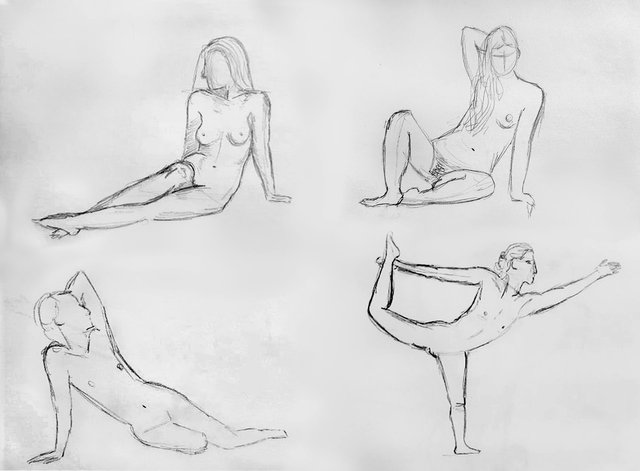
The final purpose is to compare this level, to my level post-learning. So, I will make others sketches after my tutorials series, and we will see together :)
(Yes, do not correct these ones is also encouraging to be able to perceive a clearer difference with my future level, I admit lol)
So, I decide to take you with me in this adventure. :)
I will post here a serie of anatomy tutorial, decomposed in different parts, because I prefer to be focused on a part a time, to be more precise.
So here they are :
- The head and the neck
- The chest and the pelvis
- The arms, and its roots in the chest
- The hands
- The legs
- The feet

The body in its entirety.
First, as an intro to these tutorials, I want here to approach the body in its entirely, by introducing some proportions rules.
The first thing you have to know is, even there are rules, every person is different. It's the reason why it's important to draw from a model ; the differences between us, paradoxically, make us humans.
But, as beginners, it will simplify the anatomy approach, and make it more intuitive.
When we speak about anatomy proportions, the name of Leonard De Vinci appears often ;
He offers works about the human body, and proposed canon of proportions.
And it's represented in the "vitruvian man" :
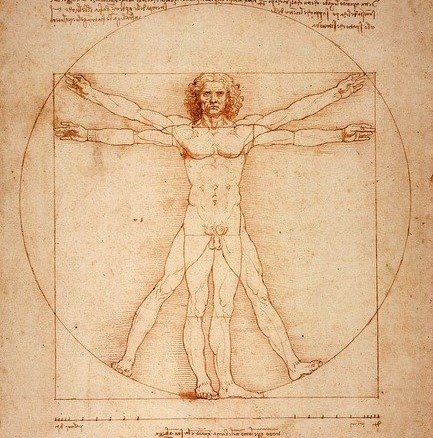
So, here is the rules I can quote you :
The distance between the left hand and the right hand, outstretched arms, (also called the span) is equal to the height of a man.
-> In fact, for men, the span is often higher than the height.
.......... for women, the span is often smaller than the height.
The width of the shoulders would be involved in this result ; being larger in men.The pubic area is in the middle of the height, and the knee are at the quarter of it.
With arms at sides of body, the hand can be placed at mid-thigh, and the wrist at the top of the pubis.
At the same time, the elbow is placed at waist level.The body includes in average 8 head lengths (including the head), and 2 head widths.
The distance between the shoulders and elbow is equal to the one elbow to the metacarpals.
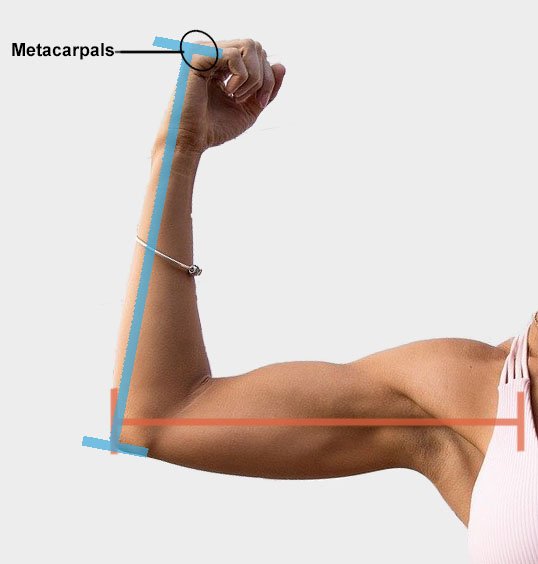
- Finally, as the same logic, the distance between hips to knees is equal to the one between knees to the foot.

The body's balance.
When we draw a body, we have to keep in mind the body balance.
As you know (I hope ;) ) the body is not a perfect vertical line ; It have curves and slants.
If we put a line in its centre of gravity to a standing human, it arrives in front of the ear (the center of the head) and in the center of the foot.
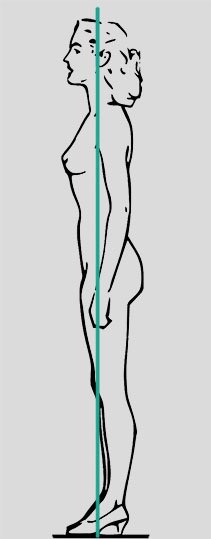
The posture and the balance is something very important in drawing. And here we go a little bit to the mechanics part ; indeed, it's a question of physical weight : if too much weight goes to a direction without sufficient at the opposite, the body fall.
I illustrate you this :
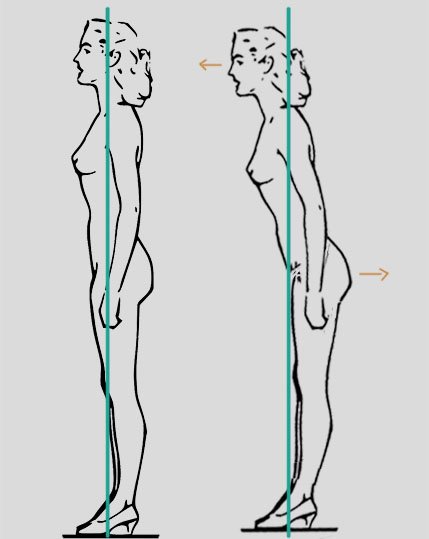
In this example, the women leans forward.
To be physically possible, she have to tilt his pelvis backwards. If not... You can make the experience at home 😂
Even it work only on this position, it's interesting to learn where some parts arrive, comparing to this line :
-> The ear and the shoulder passe in front of this line, while the hip joint passe behind (yes it's not obvious here but I tell you :p )
It will be interesting, if you draw by model, to compare the body to a line (with you pencil, or with a background element next to the body) because the brain have for habit to simplify everything.
So, things are a little bit slant appears perfectly right, and some things looks like there are in the same alignment.. but not!

Here is the end of my intro. :)
Next time, I will introduce you the head, its anatomy and rules, to be able to draw by imagination any head in any angle ;)
I hope this serie will be useful for you, as this study is useful for me.
Of course, if you have any comment or suggestion, don't hesitate.
See you soon! 😊
Dear @pipoune, reading through your post I had a feeling being again in Art school. Sometimes it is helpful to know basics of anatomy before starting a drawing, everything is like other subjects, when we know math, all the tasks become easy. It would be great to accompany your journey in drawing of human anatomy, especially without model it is not really easy as it might sound.
You post is nominated for „Wold of xpilar“ Community Support Program, @booming account upvote. Only the posts that are not cross posted, original and posted from community page are eligible. If your post gets approval, then you get upvote within few days. Good luck!
Yes, it is very useful, especially since I didn't learn much anatomy during my studies, because it was oriented towards computer graphics, and teachers assumed that we all mastered the basics of drawing, which was not the case for the majority... Thanks for your support 😊
Thanks for sharing this, it's great 👍
You're welcome, thanks to you! 😊